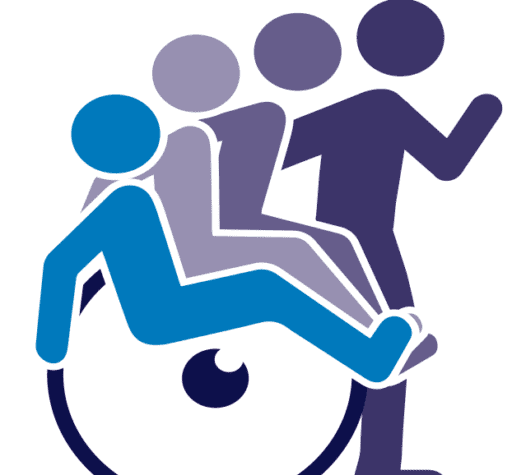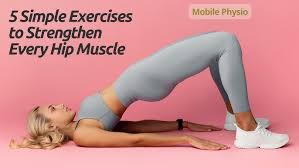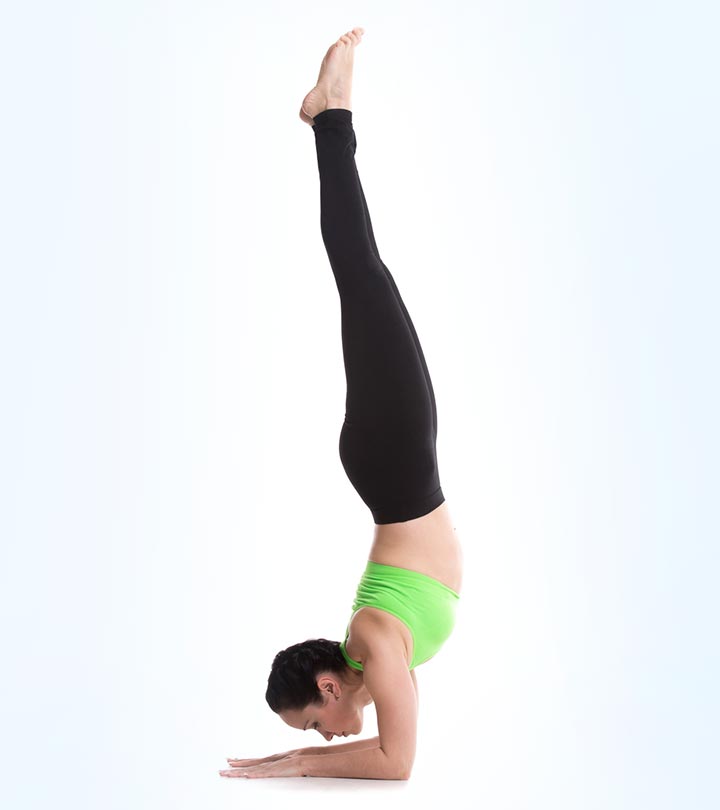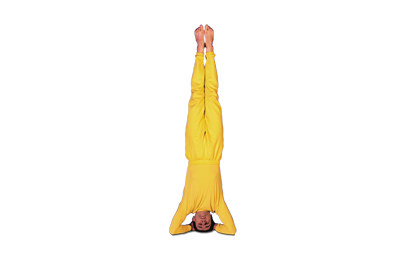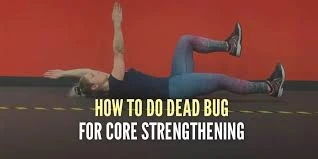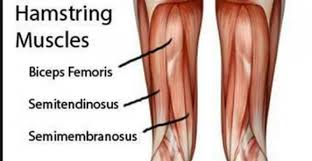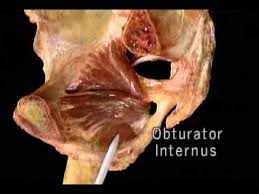5 Simple Exercises to Strengthen Every Hip Muscle
Table of Contents
Introduction:
Walking, jogging, climbing, and almost every other lower-body movement rely on the hips, which are a powerhouse. Weak hip muscles can cause poor posture, limited movement, and even pain in the back, knees, or legs.
The good news is that developing hip strength does not need difficult routines or heavy equipment. With a few specific movements, you can engage and strengthen all of the major hip muscles, including the glutes, hip flexors, abductors, and adductors.
In this article, we’ll look at 5 easy yet extremely effective exercises for strengthening all hip muscles and keeping your lower body strong and stable.
Benefits of 5 Simple Exercises to Strengthen All Hip Muscles:
Hip strengthening exercises are simple yet effective, and they provide several advantages to your body and daily life. These exercises strengthen the glutes, hip flexors, abductors, and adductors while also improving total lower-body stability. Regularly exercising them allows you to:
- Improve Stability and Balance: Strong hips create a stable foundation, allowing you to move with greater control and lowering your chance of falling or imbalance.
- Reduce Pain and Avoid Injuries: Weak hip muscles can create tension in the lower back, knees, and legs. Strengthening them helps to ease pain and protect joints from injury.
- Increase Athletic Performance: Whether running, leaping, or lifting, strong hip muscles boost speed, agility, and overall strength.
- Improve Posture and Mobility: Strong hips provide support for your spine and pelvis, resulting in better posture and smoother, more efficient movement.
5 Simple Exercises to Strengthen Every Hip Muscle:
Chair Pose:
![Chair Poses [Utkatasana]](https://mobilephysiotherapyclinic.net/wp-content/uploads/2023/12/Chair-PosesUtkatasana.webp)
Chair Pose is a strong yoga pose that works the hips, thighs, and glutes while activating the core. This exercise works the hip stabilizers and increases lower-body endurance by maintaining a sitting position without physical support.
It also encourages proper pelvic and spine alignment, which improves posture and balance. Regularly practicing the Chair Pose not only tones the hip muscles, but it also improves the stability and strength required for sports performance and everyday motions.
Bridge Pose:
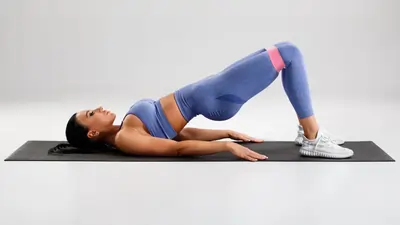
Bridge Pose is an amazing exercise that works the glutes, hamstrings, and hip extensors while also activating the core. It corrects muscular imbalances, promotes proper posture, and reduces lower back strain. Bridge Pose, when practiced regularly, not only strengthens the hips but also improves spine and pelvic flexibility and mobility.
Side-Lying Hip Abduction:
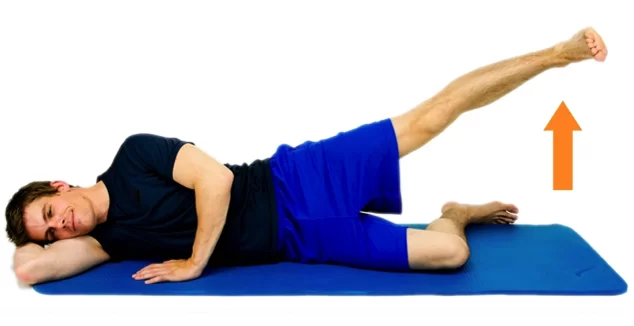
Side-Lying Hip abduction is a basic yet effective exercise that focuses on the hip abductors, particularly the gluteus medius, which is important for pelvic stability. Lifting your top leg while resting on your side strengthens the outer hip muscles, improves balance, and improves lower-body alignment.
It also helps to reduce knee and back pain caused by weak hips. Regularly performing this exercise improves hip stability and makes walking, jogging, and other daily activities easier and more controlled.
Straight Leg Raises:
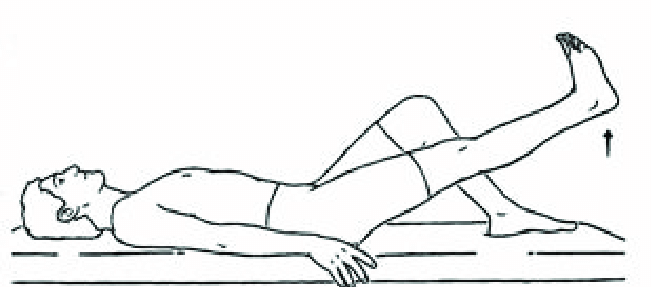
Straight leg raises are an excellent exercise for developing the hip flexors, quadriceps, and core muscles. Lifting one leg upward while lying flat on your back promotes stability in the front of the hip joint and improves control while walking, climbing stairs, or sprinting. Regular Straight Leg Raises improve hip strength and endurance, making daily activities more efficient and pain-free.
Bird Dog Exercise:
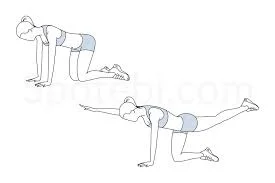
Bird Dog Exercise is a dynamic exercise that works the hips, glutes, and core while improving balance and coordination. This exercise, performed on all fours with one arm extended forward and the opposing leg backward, works the hip stabilizers and improves spinal alignment.
It corrects muscular imbalances, promotes good posture, and relieves lower back pain. Bird Dog training improves hip stability, making everyday tasks and sports motions more regulated and efficient.
Conclusion:
A few easy, focused exercises may make a significant impact in strengthening your hips without the need for elaborate routines or heavy equipment. Chair Pose, Bridge Pose, Side-Lying Hip Abduction, Straight Leg Raises, and Bird Dog Exercise all work together to engage and develop every major hip muscle, resulting in improved stability, balance, and mobility.
Consistent practice of these exercises will not only improve your posture and athletic performance but will also help you avoid hip, knee, and lower back pain and injuries. Strong hips are the cornerstone of a strong body, so incorporate these exercises into your normal program for long-term health and strength.
FAQs
Bridges, squats, lunges, clamshells, and band walks are effective hip strengthening exercises that work the glutes and surrounding muscles to increase stability and power. Incorporate a range of exercises that target hip flexion, extension, and abduction to improve total hip strength and balance.
Curtsy lunges help to strengthen and tone your legs and glutes, improve balance and stability by working minor stabilizer muscles, and increase hip mobility and flexibility. They efficiently target the gluteus medius and outer hip muscles, improve knee stability, and correct muscular imbalances for a more complete lower body workout.
Cycling, whether indoors or outdoors, is one of the most beneficial forms of exercise for persons with arthritis. It’s low-impact, so you’ll get a solid exercise without assaulting your joints, and it improves the muscles that support your knees, ankles, and feet. Research has revealed that it can also help with hip osteoarthritis.
After some training, you may be able to run a 5K without feeling tight the next day. The same goes for your hip flexors. If you strengthen the muscles in your hips, they may feel less stiff after exercise.
The quickest strategy to build bone density is to combine regular weight-bearing exercise and resistance training with enough calcium and vitamin D intake, keeping a healthy weight, and avoiding hazardous drugs such as smoking and excessive alcohol use. Combining these procedures results in the most effective and complete approach to bone development and strengthening.
Exercising the glutes, hip flexors, and surrounding muscles will help you grow hip muscles. Squats, lunges, hip thrusts, and clamshells are all beneficial exercises. Include movements like hip circles, leg lifts, and bridges to boost strength and stability.
To enhance blood circulation in the hip joint, use activities that promote hip mobility, flexibility, and muscular strength. Regular low-impact sports such as walking, cycling, and swimming help improve blood circulation. Wall slides and certain stretches are also effective strengthening workouts. Furthermore, keeping a healthy weight and avoiding smoking helps improve circulation.
Ellipticals and stationary cycles are good for those who have poor hips since they provide a low-impact, full-body workout with adjustable resistance and slope. Recumbent bikes, with their chair-like seats and mild motion, are especially good for people who have hip problems.
To develop your hips, try exercises that target multiple muscle groups, such as hip bridges for the glutes, clamshells for the outer hip and glute muscles, side leg lifts for hip abduction, and lunges or squats for general hip and leg strength. You may also use motions like band walks and fire hydrants to increase stability and work the hip muscles more efficiently.
Many people acquire weak gluteal (buttock) muscles, including hip abductors, as a result of spending too much time sitting during the day. Being inactive for an extended period of time might cause the body to effectively “turn off” certain muscles, making them more difficult to utilize (activate) while exercising.
Standing exercises are mostly used to work the hip joint. Weight-bearing activities include walking, squatting, lunging, and planks. Weight-bearing activities can also be considered resistance exercises.
Regular walking is a good technique to relieve hip pain because it improves hip joint flexibility and range of motion, increases blood flow to the area, activates nerve endings that interact with the brain, and strengthens the muscles around the hip.
References:
- Cronkleton, E. (2025, July 3). 14 Exercises for strengthening and increasing mobility in the hips. Healthline. https://www.healthline.com/health/hip-exercises
- Ken. (2022, June 9). 5 exercises to strengthen your hips: Orthopedic Surgeon Bellevue. Chris Boone, MD. https://christopherboonemd.com/blog/5-great-exercises-to-strengthen-your-hips/
- Exercises for the hips. (n.d.). Versus Arthritis. https://versusarthritis.org/about-arthritis/exercising-with-arthritis/exercises-for-healthy-joints/exercises-for-the-hips/
- SportsMed, Y. (2025, March 12). 7 Best Hip Strengthening Exercises and How to Do Them Effectively | Physiotherapists in Toronto | Yorkville Sports Medicine Clinic. Physiotherapists in Toronto | Yorkville Sports Medicine Clinic.
- Performance, H. R. A. (2023, November 8). Stretches and exercises to strengthen hips from a PT. Hospital for Special Surgery. https://www.hss.edu/health-library/move-better/hip-strengthening-exercises
- Co, P. (2021, May 19). 5 Daily exercises to strengthen your hip at home. The Physio Co. https://www.thephysioco.com.au/5-daily-exercises-to-strengthen-your-hip-at-home/
